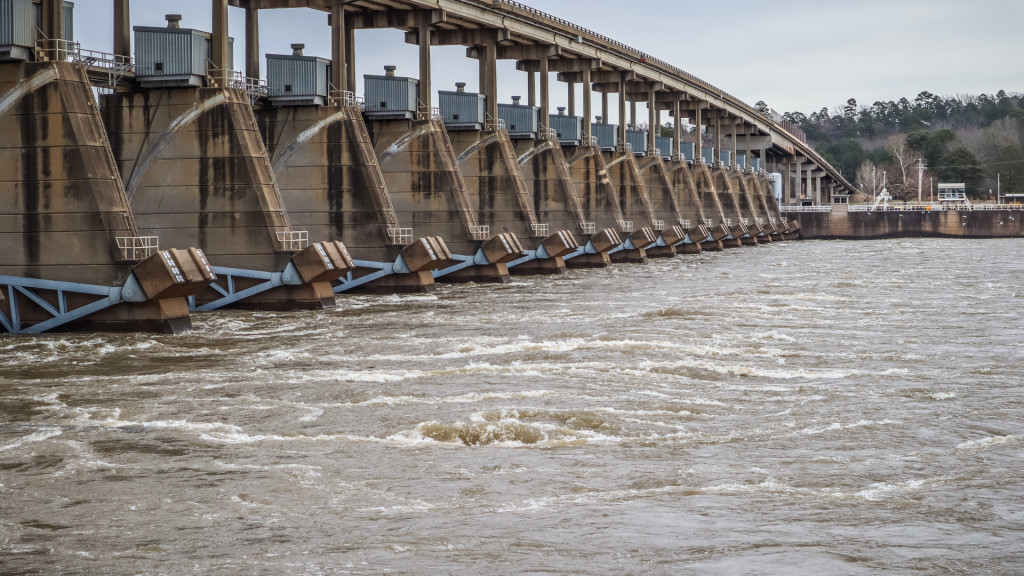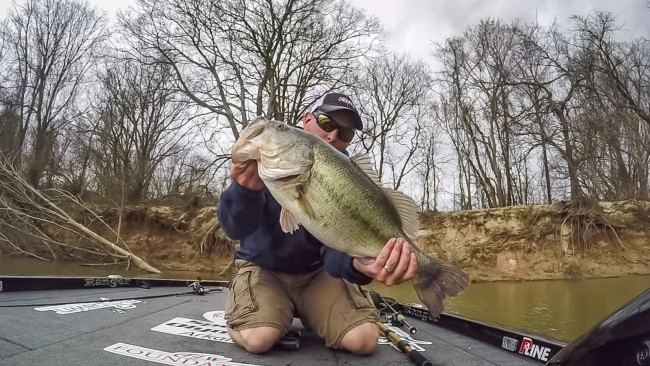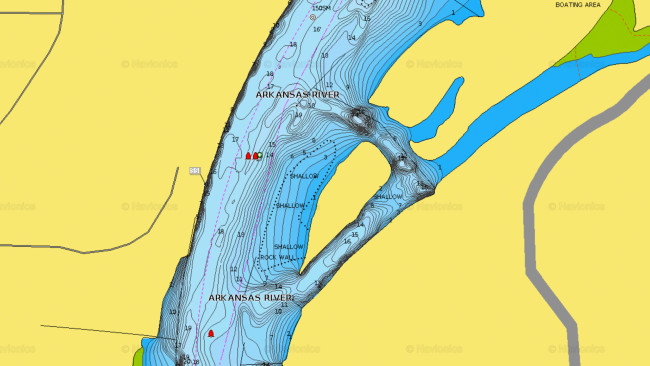Fishing the Worst Conditions
How to deal with cold, muddy water in winter and early spring

Watching giant bags of bass caught down in Texas and Florida on FLW Live during FLW Tour events has many anglers dying to get on the water. The only problem is that a lot of people are still facing some of the toughest conditions for catching a bass – cold, muddy, moving water.
This isn’t as much of an issue for people who live near clear-water fisheries, but if you’re like me and find yourself only having close access to less-than-ideal waters for winter fishing, you might consider foregoing fishing to work on tackle and dream about the warmer months when the bite will be better.
However, there are still bites to be had when you have only the worst conditions to fish. These are my favorite tips for getting your line stretched when faced with what I think are the absolute toughest conditions for bass fishing.

Get your mind right
Fishing in tough conditions calls for a completely different mindset. You have to go into it knowing that you aren’t going to get nearly as many bites as you might if you were on a reservoir that is known for good winter fishing – somewhere like Lake Lanier. I fish the Arkansas River near my home this time of year, and I like to set goals but keep them reasonable. Sometimes they’re small goals.
I like to start with just trying to get one bite per area. That’s right; just a single bite. I’m not worried about size, weight or anything other than just getting something to eat, at least to start with. Once I get a couple of bites I can start worrying about fine-tuning things to catch a better bag.
You hear all the time that you need to be “mentally tough” while fishing. This could not be truer in these conditions. You really have to tell yourself that you WILL get a bite in the area … and believe it, too. Confidence catches fish. If you begin second-guessing your area before you ever make a cast, you might as well put it back on the trailer.

Improve the conditions
Although things might look absolutely terrible at the ramp, that doesn’t mean you can’t find areas that offer SLIGHTLY better conditions. When it comes to fishing a cold and muddy Arkansas River, for instance, I look for areas that have cleaner water – even slightly cleaner – with no current.
In my case, that generally means looking for backwaters that are blocked off at the top by a rock jetty or other feature. There’s usually a deep hole right next to the jetty that’s caused by current washing over the top during high-water times, and the hole makes an awesome wintering spot for bait and bass. Many times these backwater areas will have warmer water as well.
Remember that on rivers, the water flowing down usually has a lower temperature than still-water areas. I’ve seen flowing water coming down that was in the mid- to high 30s, while the backwaters close by offered waters in the mid-40s. Once in these areas, I look for things that will hold even a bit more heat, such as rocks, logs, trees, brush, or even old barrels or tires (we are talking about river fishing, after all).
On other fisheries, you’ll need to look for similar situations, or key on areas with the most sunlight (south-facing banks), least cold-water runoff, etc. There’s usually some type of area on a lake or reservoir that fits what I’m describing.

Low and slow with confidence baits
When bites are limited, it’s not the time to be experimenting with the newest bait or technique. I like to keep it simple when it comes to lure selection. This means no more than four rods. That’s it. I like to have two moving baits and two things I can just drag around. I only use baits that I know will get bites under all conditions. For me that means a spinnerbait, crankbait, finesse jig and drop-shot, and these pretty well apply all over the country.
Although these are common lures and presentations, I fish them in a bit of an uncommon way in tough conditions. Because the water is muddy, I like to have my bait in contact with cover and structure as much as possible. How I do it depends on the bait.
Crankbait – Everyone knows that a crankbait makes a great offering for a winter bass, but I like to use big plugs and throw them considerably shallower than they were intended to be used. For example, I might throw a Rapala DT14 down a rock jetty in only 5 feet of water. I can crawl it at a snail’s pace and keep it down easily.
Spinnerbait – This presentation is the same. I crawl it. Typically, I want weights from 1/2 to 1 ounce, depending on the depth I’m trying to hit. I try to fish it as slowly as I possibly can. I’m not afraid to wind it so slow that it almost feels like I’m dragging it like a jig along bottom or through the limbs of a big laydown.
Jig and drop-shot – I always make a point to go with the lightest jig or drop-shot weight I can get away with and still feel the bottom. The lighter weight forces me to slow down the presentation to stay in contact with the cover/structure.
Spring isn’t too far around the corner, but if you want to get in some early fishing and are faced with some of the toughest conditions, try these tips to help you get hooked up.